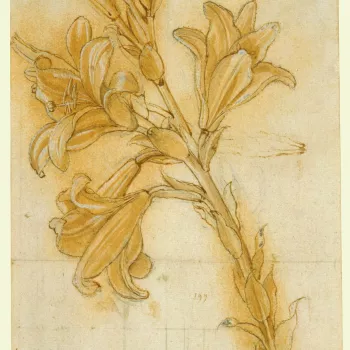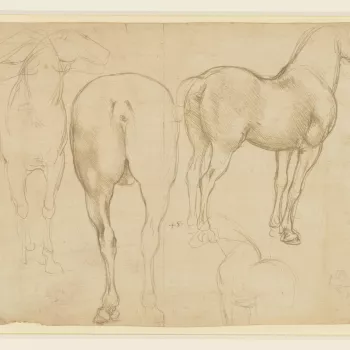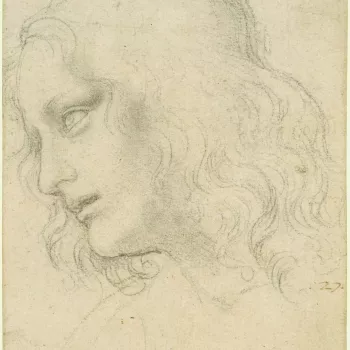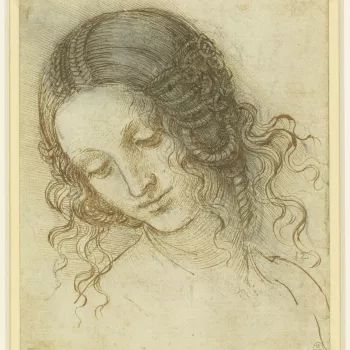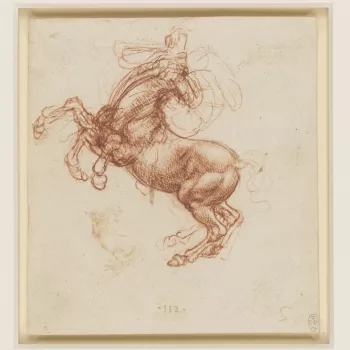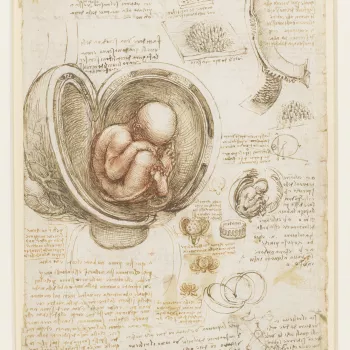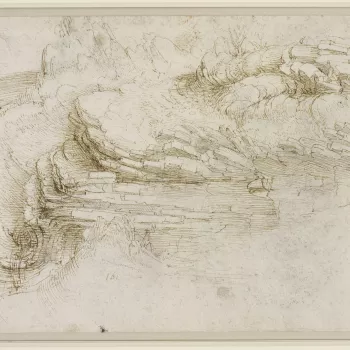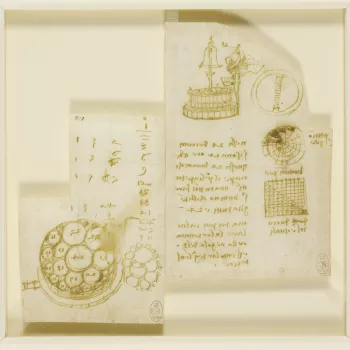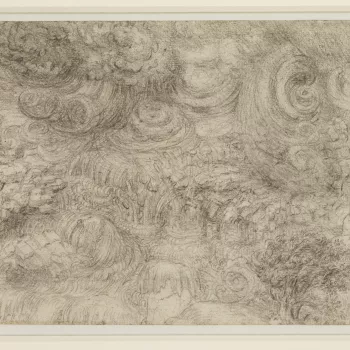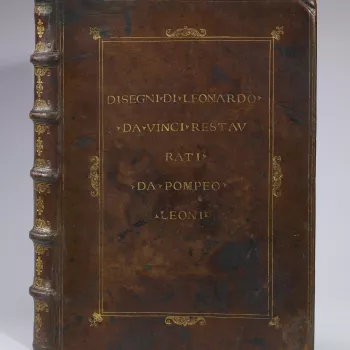
The Exhibition
Leonardo da Vinci died 500 years ago, on 2 May 1519, at the age of 67.
During his lifetime Leonardo had attained fame as a painter, sculptor, architect and engineer. But many of his works had remained unfinished, and few people knew of his remarkable scientific investigations.
It is primarily through Leonardo’s drawings and notes that we can understand the man and his achievements. He drew incessantly – to devise his artistic projects, to explore the natural world, and to record the workings of his imagination.
Leonardo kept thousands of these drawings to the end of his life, bequeathing them to his favourite pupil to ensure that his legacy would be preserved.
Around 550 of these drawings entered the Royal Collection in the seventeenth century, mounted on the pages of a single album. Eighty of the finest are presented here, to give a uniquely intimate picture of the original ‘Renaissance Man’.




